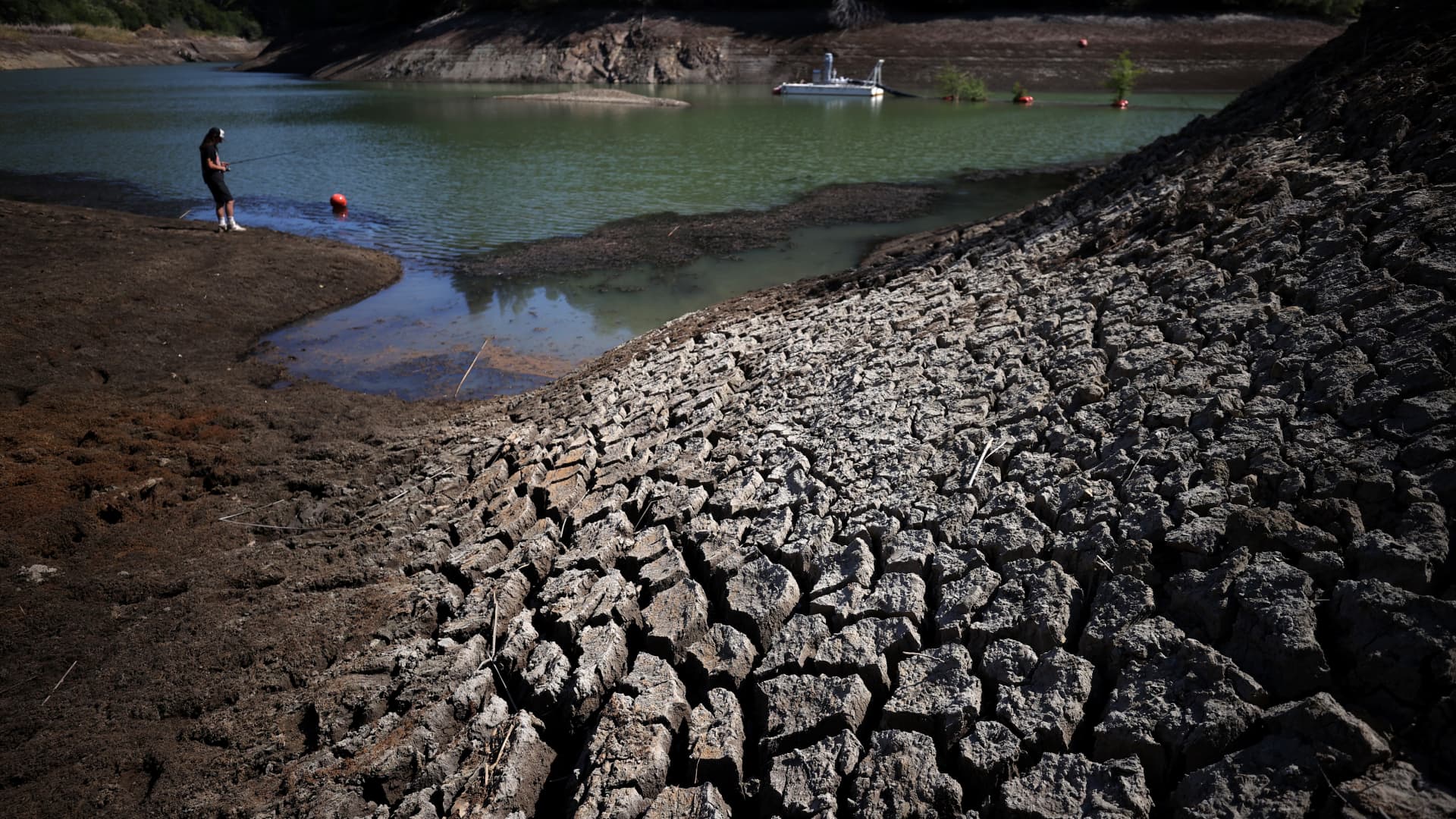
- An extreme heat wave gripping the western U.S. will intensify and spread this week, creating dangerous conditions amid the worst drought in modern history.
- More than 40 million people in the U.S. are forecast to experience triple-digit temperatures this week and roughly 200 million people are projected to see temperatures over 90 degrees.
- Temperatures this week are expected to remain high overnight, too, a dangerous trend that's become more frequent with climate change.

An extreme heat wave gripping the western United States will intensify and spread this week, creating dangerous conditions amid the worst drought in the last two decades and raising concerns about severe wildfires and electrical grid failures.
More than 40 million people in the country are forecast to experience triple-digit temperatures this week, and roughly 200 million people are projected to see temperatures over 90 degrees Fahrenheit. More than three-fourths of the West is in severe drought, according to the U.S. Drought Monitor.
Get top local stories in Southern California delivered to you every morning. >Sign up for NBC LA's News Headlines newsletter.
Temperatures in some areas could surpass 120 degrees, and excessive-heat warnings are in place for several states. Nevada and Arizona are forecast to see record temperatures of 125 and 128 degrees, respectively.
Rupa Basu, chief of air and climate epidemiology for the California Office of Environmental Health Hazard Assessment, said the drought and heat wave create a "perfect storm" for fires and poor air quality.
Temperatures this week are expected to remain high overnight too, a trend that's become more frequent with climate change, since global temperature rise is not occurring evenly.
Money Report
"Heat waves are boosted by the steroids of climate change and increasingly more likely to break records," said Alexander Gershunov, a research meteorologist at Scripps Institution of Oceanography at UC San Diego.
Heat waves are also becoming more humid, which is dangerous because hot, saturated air makes it harder for people to cool off. Humidity is also likely to spawn more thunderstorms, Gershunov said, which increase the chances of lightning strikes that start fires.
Lower nighttime temperatures that usually provide relief from hot days are disappearing, creating a dangerous combination of high daytime and high nighttime temperatures that don't provide a chance for people to cool down at night.

"During peak hours, conserve energy, avoid excessive time outdoors especially doing strenuous activity or exercising, drink plenty of water, walk [or] bike instead of using cars for transportation if possible," Basu said.
High temperatures in areas dependent on air conditioning could result in grid failures and endanger people unable to escape the heat.
Grid operators in Texas and California have called on residents to limit electricity use in order to avoid blackouts this week. In Texas, high temperatures have already caused a slew of mechanical issues at power plants — just four months after a deadly winter storm knocked out power for millions of people.

Wildfires have also ignited early this year due to the hot and dry temperatures and high supply of dry brush. As of Wednesday, 33 large blazes have burned more than 360,000 acres in 10 states, according to the National Interagency Fire Center.
Worldwide, each decade over the last half century has been hotter than the last, and 2020 tied with 2016 as the hottest year on record.
Global warming has also sent the Southwest U.S. into a decades-long megadrought, which has resulted in declining snowpack levels, lake and river levels and groundwater availability, among other things.






